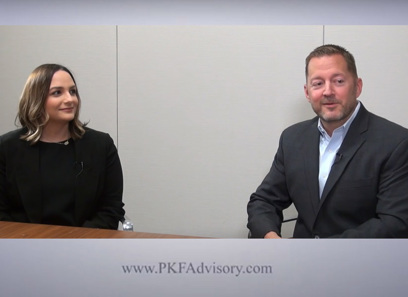The Influence of Mergers and Acquisitions on Market Dynamics and Competitors
The landscape of mergers and procurements provides a complicated interaction between fostering development and potentially weakening affordable honesty within markets. As firms seek critical positionings to boost performance and technology, the implications on customer selection and market rates warrant mindful examination.
Introduction of Mergers and Acquisitions
Mergers and purchases (M&A) play an essential duty in forming the landscape of contemporary service, as business seek to enhance their one-upmanship and accomplish critical purposes. M&A deals include the debt consolidation of business or assets through numerous economic deals, including mergers, where two companies combine to form a new entity, and acquisitions, where one firm purchases one more outright. These activities are driven by a myriad of aspects, such as the search of synergies, diversification of product offerings, and the desire to enter brand-new markets.
The M&A procedure commonly includes several phases, including strategic preparation, due diligence, settlement, and combination (Emerging Market Opportunities). Business carry out comprehensive evaluations to determine potential targets that straighten with their growth approaches and evaluate the operational and economic ramifications of a purchase. Regulative factors to consider likewise play a crucial duty, as antitrust legislations are designed to stop monopolistic practices that might harm competition
As companies navigate the intricacies of M&A, the end results can significantly affect stakeholders, consisting of customers, shareholders, and workers. Consequently, comprehending the characteristics of M&A is crucial for assessing their effects within the more comprehensive context of market behavior and competitive placing.
Positive Impacts on Market Characteristics
The combination of business with purchases and mergings can bring about substantial positive impacts on market characteristics. Among the main advantages is the enhancement of functional performances. By integrating resources, firms can simplify procedures, lower redundancies, and attain economic situations of range, ultimately reducing costs and improving success. This effectiveness can equate into lower prices for customers, cultivating a much more open market atmosphere.

In addition, enhanced market share resulting from mergers can offer firms with greater bargaining power with suppliers and vendors, promoting boosted conditions that can profit the general supply chain.
Adverse Consequences for Competition

Furthermore, the elimination of competitors with purchases can stifle advancement. When crucial gamers combine, smaller companies might battle to complete, causing a homogenization of services and products. The resultant lack of competition can develop a setting where continuing to be firms have much less reward to invest in r & d.
Moreover, mergings can produce barriers to entry for brand-new companies, as the merged entity may leverage its boosted sources to control the market. This can prevent prospective entrants, thereby restricting competitors and development in the long term.
Inevitably, while acquisitions and mergers can use tactical advantages, their possible to threaten competition necessitates mindful consideration of their broader implications on the marketplace dynamics. The balance between development and competitive honesty continues to be an important concern in assessing such business methods.
Regulative Considerations and Oversight
Regulatory frameworks play an important duty in shaping the landscape my blog of mergings and acquisitions, guaranteeing that market characteristics stay affordable and reasonable. These structures are made to protect against anti-competitive actions and to shield consumer passions. Regulatory bodies, such as the Federal Trade Commission (FTC) in the United States and the European Compensation in the EU, evaluate proposed mergers and acquisitions based upon their potential influence on competitors within the marketplace.
The analysis process involves a complete examination of the market share, possibility for monopolistic methods, and the general financial effects of the transaction. Regulatory authorities typically impose conditions or require divestitures to mitigate issues over minimized competition, ensuring that the merged entity does not dominate the marketplace unfairly.
In addition, openness is a key component of regulatory oversight. Stakeholder engagement, including public examinations, enables diverse point of views to be taken into consideration in the decision-making process. This collaborative approach assists to cultivate a balanced regulative atmosphere that promotes technology while safeguarding affordable techniques. Eventually, efficient regulative considerations are important in preserving market honesty and motivating healthy and balanced competitors when faced with developing organization landscapes.
Case Researches and Real-World Instances
Often, study of notable mergings and purchases illustrate the profound results these deals can have on market dynamics. The 2000 merging in between AOL and Time Warner functions as a prime instance, where the prepared for harmonies failed, causing a drastic decline in shareholder worth. This instance emphasizes just how cultural imbalances and overestimation of market potential can interfere with competitors.
In comparison, the purchase of WhatsApp by Facebook in 2014 exhibits a successful integration that improved the interaction landscape. Emerging Market Opportunities. Facebook leveraged WhatsApp's user base to boost its solution offerings, successfully enhancing its market prominence while preserving competition in the messaging market
One more substantial situation is the merger of Exxon and Mobil in 1999, which created one of the globe's largest oil firms. This loan consolidation caused higher effectiveness however raised problems concerning lowered competitors in the energy market, motivating regulatory examination.
These instances highlight the intricate interaction between acquisitions and mergers and market dynamics, showcasing both the potential benefits and pitfalls that can emerge, ultimately forming competitive landscapes across industries.
Conclusion
Mergers and purchases play a pivotal role in forming market dynamics click here to find out more and competitors. Efficient regulatory oversight is important to ensure that the advantages of M&An activities are maximized while reducing negative influences on market click for more info competition.
One major problem is the capacity for lowered market competition, as mergings commonly lead to the combination of market power among fewer players. Regulatory bodies, such as the Federal Trade Commission (FTC) in the United States and the European Compensation in the EU, evaluate suggested purchases and mergers based on their potential influence on competition within the market.

Mergers and procurements play a critical function in forming market characteristics and competitors. Efficient regulatory oversight is important to ensure that the advantages of M&An activities are taken full advantage of while alleviating negative impacts on market competition.